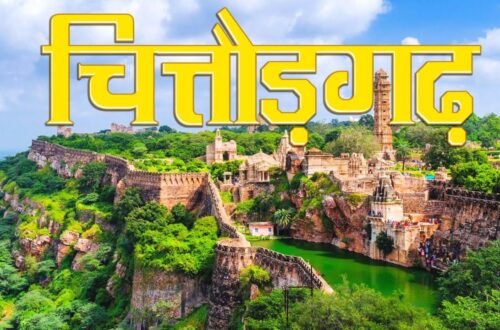Nestled in the heart of Rajasthan, Ranthambore National Park is one of India’s most iconic wildlife destinations, known for its majestic tigers, ancient ruins, and breathtaking landscapes. For travelers seeking the perfect balance between wilderness and comfort, staying at the best resort in ranthambore offers a unique way to experience this natural wonder. From the thrill of spotting a tiger in its natural habitat to immersing yourself in the region’s deep-rooted history, every moment in Ranthambore brings you closer to nature’s raw beauty and power.
1. The Majestic Bengal Tiger: The Heartbeat of Ranthambore
When it comes to wildlife highlights, nothing captures the essence of Ranthambore quite like the Royal Bengal Tiger. These magnificent creatures rule the park’s dense forests, grasslands, and tranquil lakes, offering visitors an unforgettable wildlife experience. Ranthambore is home to a significant population of tigers, and the park’s management has worked diligently to preserve their habitat while promoting responsible tourism.
The thrill of spotting a tiger during an early morning safari is unmatched. As the sun rises over the Aravalli hills, the park comes alive with the sounds of nature—the call of the peacock, the chatter of langurs, and the rustling of leaves hinting at a tiger’s silent movement. Photographers and wildlife enthusiasts from across the world visit Ranthambore to capture these awe-inspiring moments. Each tiger has its own personality and territory, and local guides, with years of experience, can identify them by their distinctive stripe patterns.
Apart from tigers, Ranthambore also shelters leopards, sloth bears, and hyenas. The park’s rich biodiversity ensures that every safari offers a different story. The experience isn’t merely about spotting big cats—it’s about understanding the delicate balance between predator and prey that defines this ecosystem.
2. The Ancient Ruins and Landscapes: Nature and History Intertwined
Ranthambore isn’t just a wildlife destination; it’s a journey through time. The ruins of the 10th-century Ranthambore Fort, standing tall on a hill overlooking the park, tell tales of bravery, heritage, and architectural brilliance. The fort, now a UNESCO World Heritage Site, is surrounded by temples, old mosques, and cenotaphs that blend beautifully with the forested landscape. Exploring these ruins during your visit gives you a unique glimpse into Rajasthan’s regal past.
What makes the fort truly enchanting is the way nature has reclaimed it. Monkeys leap across ancient stone walls, and peacocks perch on battlements as the morning mist rises over the forest below. This merging of history and wilderness gives Ranthambore a charm that few other destinations can match.
The lakes within the park—Padam Talao, Rajbagh Talao, and Malik Talao—add to its scenic beauty. Padam Talao, the largest of them all, is home to flocks of migratory birds and the graceful sight of deer grazing along its banks. If you’re lucky, you might even spot a tiger cooling off in its waters—a sight that perfectly captures the soul of Ranthambore.
Staying at a luxury resort in ranthambore allows guests to enjoy these breathtaking surroundings with unparalleled comfort. Many resorts are designed to blend with the environment, offering rustic charm without compromising on modern amenities. The serene ambiance, combined with proximity to the park, makes it easy to connect deeply with the wilderness.
3. The Avian Paradise: A Birdwatcher’s Delight
While tigers are undoubtedly the stars of Ranthambore, the park’s birdlife is equally mesmerizing. With over 300 species of resident and migratory birds, Ranthambore is a paradise for birdwatchers. From the regal Crested Serpent Eagle and the vibrant Indian Roller to the elusive Painted Spurfowl, the park’s diverse habitats offer endless opportunities for avian enthusiasts.
The lakes and wetlands within Ranthambore attract a variety of waterbirds such as herons, storks, and kingfishers. During the winter months, migratory birds from Central Asia and Europe visit the park, transforming it into a vibrant mosaic of colors and sounds. Early morning safaris provide the best opportunities to spot these birds as the golden light of dawn reflects off the tranquil waters.
Local naturalists often guide visitors through birdwatching trails, sharing insights about species behavior and habitat preferences. Whether you’re an amateur birder or a seasoned enthusiast, Ranthambore offers a chance to witness nature’s symphony in its purest form.
For those interested in learning more about the rich biodiversity of the region, exploring Interesting Facts About Ranthambore Wildlife Sanctuary provides fascinating insights into the park’s ecosystem, conservation efforts, and the stories of its legendary tigers.
Why Ranthambore Remains a Timeless Destination
Beyond its wildlife and scenic beauty, Ranthambore stands as a symbol of successful conservation. Decades of dedication by forest officials, local communities, and eco-conscious travelers have transformed it into one of India’s most respected national parks. The park not only safeguards its wildlife but also supports sustainable tourism that benefits the local economy and environment alike.
Visitors can enrich their experience by engaging in eco-friendly practices—such as supporting local artisans, minimizing waste, and respecting wildlife habitats. Each responsible choice contributes to preserving the magic of Ranthambore for future generations.
Ranthambore is more than a destination—it’s an emotion, a story, and an encounter with nature in its most unfiltered form. Whether you come seeking the thrill of a tiger sighting, the peace of serene landscapes, or the echoes of ancient history, this national park promises moments that linger long after you leave. With the perfect blend of adventure and tranquility, Ranthambore captures the essence of Rajasthan’s wild heart, offering an experience that’s both humbling and unforgettable.





